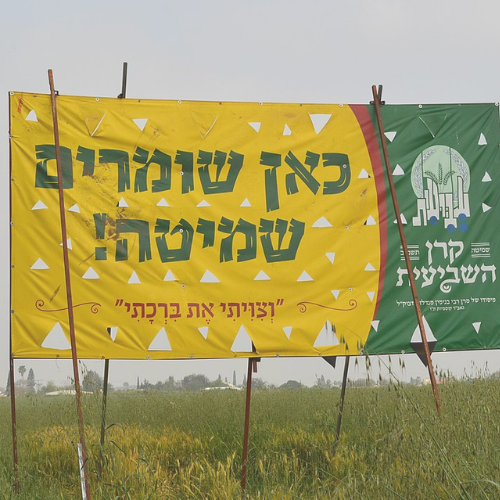Understanding Shmita's Impact on Wine Availability
Shmita refers to the seventh sabbatical year requiring Jews in Israel to observe the "year of release." During Shmita, lands must lay fallow, and produce from these lands is prohibited. This raises the question of how Shmita impacts the vintage of popular Israeli kosher wines.
Although we won't approach the observance of the next Shmita until the Jewish year 5789, beginning September 20, 2028, there are still vintages from 2015 and 2022 in wine cellars and, in some cases, on vintner shelves. With this in mind, while you want to ensure your wine cellar is well-stocked, your consideration for Shmita vintages does play an essential role in what is considered appropriate wines used for your kosher celebrations.
Shmita Explained
The Torah details the fundamental laws of Shmita, as seen in Deuteronomy 15:1, according to the Jewish Publication Society translation:"At the end of every seven years, thou shalt make a release."

Cultivation of the land of Israel must cease, debt must be released, and ownership of produce grown in the fields must be relinquished. As a result, ownership of anything that grows in Israeli fields becomes "ownerless" when Shmita begins.
The practice is connected to Shabbat La'Hashem, observed weekly; however, Shmita extends this concept to a whole year. During Shmita, we are reminded that Hashem is the ultimate Creator and Proprietor of the land. Accordingly, Shmita requires relinquishing human ownership of the land's produce, symbolically returning it to Hashem's stewardship. This act reflects a deep acknowledgment of divine sovereignty over natural resources.
Another critical aspect of Shmita is Hashem's promise of providence: the Torah teaches that the sixth year will yield a harvest abundant enough to sustain the people through the Shmita year until new crops can be grown in the ninth year. This divine provision ensures that even as the land rests, there will be sufficient sustenance for everyone, reaffirming Hashem's continuous care and the cyclical nature of these agricultural commandments.
Challenges for Kosher Wine Production
There are three main challenges for Shmita wine vintages:
-

Working the Land
During Shmita, landowners in Israel are prohibited from engaging in any agricultural activities that enhance the land, prepare it to yield a crop, or promote vegetation growth. However, protective measures for crops established before Shmita begins, such as maintaining the existing growth, are generally permitted under halachic guidelines.
-

Forbidden Product from Jewish Land
The forbidden categories are vegetables, grains and legumes, and fruit grown on trees. However, who owns the land is important. Anything grown on land owned by non-Jews is permitted.
-

Boundaries of Land
The laws of Shmita only apply to produce grown within the boundaries of Eretz Yisroel, or the Holy Land. This includes areas occupied by the people of Israel in the period of the Bayis Shein, so does not apply to the boundaries of the State of Israel today. Today, any 2015 or 2022 wines of Israeli origin present a Shmita concern.
Innovative Strategies and Adaptations
Wineries face economic difficulties when their land lies fallow for a year. As a result, kosher wineries require strategies that allow them to respect Shmita yet still remain productive. The most common strategy is Heter Mechira, the controversial practice of selling land to non-jews to work the land during Shmita. Introduced in 1887 by prominent rabbonim, which included the likes of the Gadol Hador, Harav Yitzchok Elchanan Spector, those who were against this solution included Netziv (HaravNaftoli Zvi Yehuda Berlin) of Volozhin.
Protests were based on the Torah prohibition of selling any part of Eretz Yisroel to non-Jews. Some fear that not working the land for a year puts settlements in danger or that it is worse to prohibit the sale of the land than to prohibit working on the land. Despite protests, Heter Mechira has become an acceptable practice, and the Chief Rabbinate of Israel continues to use this strategy every Shmita.

There is also a system of Shmita produce distribution called Otzar Beis Din that helps ensure a steady supply of produce administered by the local Beis Din of each city. However, it presents logistical issues with halachic contradictions, which can be more troublesome than helpful for kosher wineries. The rabbinic courts run the system as a non-profit but must charge a fee to cover the costs of crop maintenance, harvest, and distribution oversight, allowing the product to be consumed.
One last strategy is to set aside a surplus of wine to meet demand for the two years impacted by Shmita, but there will still ultimately be shortages. This approach can also present challenges for vintages produced using Shmita grapes.

Market Dynamics and Consumer Behavior
When it comes to consumer behavior, communities that respect Shmita won't buy products from Israel that don't follow the strict rules, including those relying on Heter Mechira or Otzar Beit Din. Because of this Shmita vintages impact kosher wine export markets much more than domestic markets where Israelis accept Heter Mechira as a viable and respectful solution. The two most common shortages of kosher wines available during Shmita are whites and rosés.
Exported Israeli wines must clearly state that they are Shmita-free and have a reliable kosher certification. Therefore, those concerned about the halachic challenges of buying wine from Israel must read labels carefully to look for mention of Otzar Beis Din or Heter Mechira. However, you must also pay close attention to the vintage to avoid the 2015 and 2022 years of release.
Spiritual and Community Impact
Throughout Israel, many landowners mark the onset of Shmita with celebratory gatherings in their fields featuring music and dance. These celebrations are deeply rooted in tradition, serving as a symbolic farewell to active cultivation and expressing gratitude to Hashem for the land's bounty. The celebrations honor the spiritual significance of Shmita, strengthen community bonds, and demonstrate communal commitment to the observance of these ancient laws.
As times change, each year of release raises the question of whether this is a tradition to protect or simply a challenge that presents kosher winemakers and landowners with economic and spiritual strife. However, with acceptable practices such as Heter Michira and Otzar Beit Din, in hand with distribution strategies of acceptable kosher wine vintages, it appears respect for the Sabbath to the lord will continue in the kosher wine industry.
Concluding Thoughts on Shmita and Kosher Winemaking
The Shmita year poses unique challenges for kosher winemakers in Israel, impacting the availability of certain vintages. Understanding these cycles helps appreciate the deep cultural and spiritual traditions influencing kosher wine production. As we navigate these limitations, we continue to honor and respect the rich heritage behind each bottle.
Share this page:





